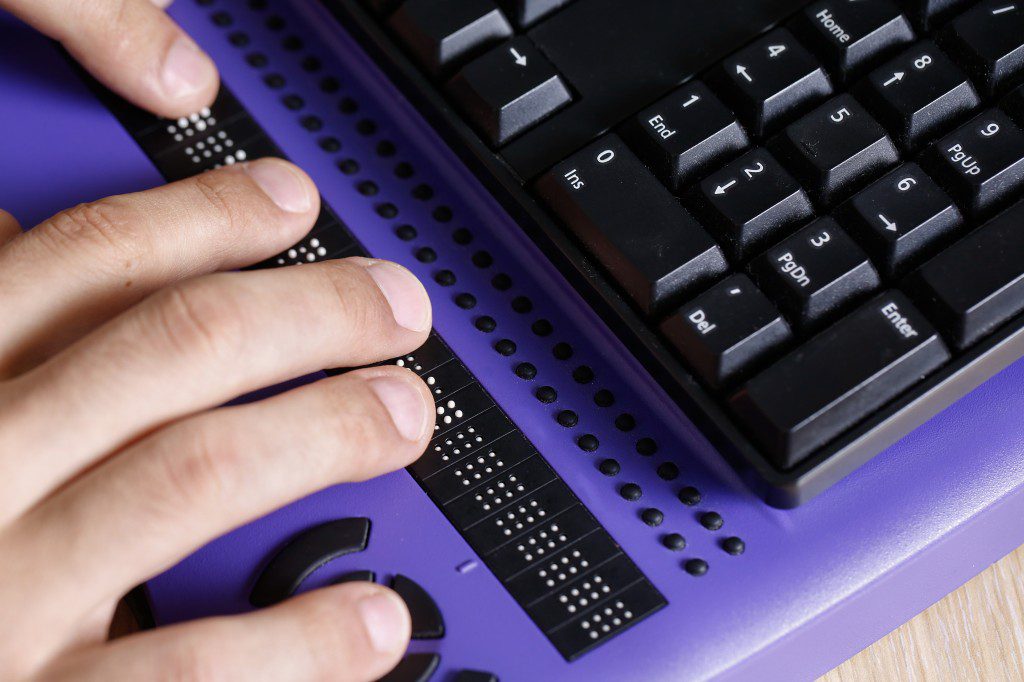A Critical Moment for Accessibility in Online Education
When the normalcy of a system is severely shaken, what follows is a critical moment that holds the potential for dramatic change. This window of opportunity is well understood by policy makers who, in times of displaced expectations, find a public more acquiescent to change, and by engineers who, when natural disaster demolishes old infrastructure, find that newer technologies are more efficient or appropriate for a given reconstruction. It is with this frame of mind that higher ed decision makers must review the accessibility of online education in the tumult of the SARS-2 coronavirus pandemic.
Impact of the Pandemic
 Students across the world were simultaneously submerged in lockdown restrictions, their academic interactions reduced to the digital medium. With such an incredible volume redirected through the channels
Students across the world were simultaneously submerged in lockdown restrictions, their academic interactions reduced to the digital medium. With such an incredible volume redirected through the channels
of online education, the higher ed system’s strong and weak points soon became apparent. Disabled students are especially sensitive to both the challenges and the benefits of this shift, and, in this critical moment, online education can be bent into a conformation not only more accommodating to the previously excluded but also more digestible to normative learners.
Impact of Instructional Technologies on Remote Learning
Three important instructional technologies at the forefront of remote learning are web conferencing, lecture capture applications, and learning management systems. Web conferencing, the likes of Zoom, Skype, and WebEx, allows for synchronous video instruction directly from teachers to students with the possibility of real-time feedback and collaboration. Lecture capture applications like Panopto, Knowmia, and MediaSite allow instructors to transpose a conventional lecture into a video format available to students at their own discretion. Canvas, Desire2Learn, Blackboard, and Moodle are learning management systems that serve as the foundation for educational materials online. They are the avenues through which instructors deliver their content.
Accessibility is an important component in all of these programs.
- While web conferencing applications are only functional with a high-speed internet connection, they may bolster clarity through live captioning algorithms, helping students that are burdened either by hearing impairments or loud environments.
- Lecture capture applications similarly translate speech to text, with the added benefits of full transcription and the flexibility of asynchronous availability.
- For learning management systems, accessibility is much more complicated, but generally the aforementioned applications strive to present the interface through which students access information in a way which is legible, adjustable, easily navigable, translatable to speech, and stable across various devices. These technologies do a great service to all students, but two other factors are even more important: the accessibility of the curriculum itself, and a given academic institution’s implementation of this confluence between information and technology.
Quality of Remote Learning
The quality of remote learning may be sorted into various degrees of efficacy.
- At the bottom tier are institutions which have shifted online in the most rudimentary fashion possible, merely shoveling content to an online access point with little or no regard for the differences between learning mediums. This “shovelware,” bereft of instructional design and accessibility, is a far cry from the traditional classroom’s level of organization, engagement, and concision.
- One step up you will find institutions that have partially implemented some relevant technologies and design practices into their curriculum, but haven’t achieved a comprehensive and consistent degree of quality throughout the breadth of their courses. Some instructors who are privy to these concepts will steer a well-equipped course, but others resort to info-dumping shovelware.
- The institutions with the most effective distance education engage widespread adoption of remote technologies. Their online lectures are live captioned and available for download, and all of the content within their learning management systems is built from the ground up with instructional design and accessibility in mind.
 The shift to remote learning was incredibly sudden, and the mileage that students got out of that shift varied substantially. Some students, bound by movement, auditory, and visual impairments, noted a marked improvement in their ability to learn when their institutions were appropriately equipped with online accommodations. Others, who struggle with autism, learning disabilities, and attention disorders, found learning to be many magnitudes more challenging while detached from the traditional classroom and in-person attention, regardless of remote accommodations. Unfettered students do not require accessible provisions, but still benefit from the availability of lecture recordings and transcripts and an increased flexibility in time and location.
The shift to remote learning was incredibly sudden, and the mileage that students got out of that shift varied substantially. Some students, bound by movement, auditory, and visual impairments, noted a marked improvement in their ability to learn when their institutions were appropriately equipped with online accommodations. Others, who struggle with autism, learning disabilities, and attention disorders, found learning to be many magnitudes more challenging while detached from the traditional classroom and in-person attention, regardless of remote accommodations. Unfettered students do not require accessible provisions, but still benefit from the availability of lecture recordings and transcripts and an increased flexibility in time and location.
Accessibility in Online Education
Although the playing field will never be equal for every participant, it would benefit all to raise the bar for accessibility in online education. It is important not only to retain some of these helpful accommodations, but also to shape schools and universities toward a fairer future while the metal of this moment is still hot. The instructional technologists at focusEDU can provide expert advice and assistance. Visit them here.

Leave A Comment
You must be logged in to post a comment.